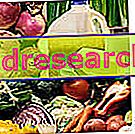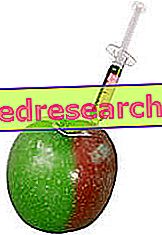What are Functional Foods?
Foods are defined as functional when, beyond their basic nutritional properties, their ability to positively influence one or more physiological functions is scientifically demonstrated. A fundamental prerogative of the same foods is also to contribute to preserving or improving the state of health and / or reducing the risk of onset of diseases related to the diet.

Examples are tomatoes, garlic, yogurt, legumes, salmon, walnuts and broccoli. Breast milk is the best functional food available for the newborn. They do not fall into the category of supplements and dietary foods, as they are outside the normal eating habits of the healthy population.
Obviously, before publicizing the functional properties of a food, solid experimental evidence is needed, able to demonstrate its efficacy and safety. The whole process involves distinct phases: first of all, it starts with a statistical or empirical observation that recognizes a given food as beneficial properties for maintaining health and preventing disease; then we try to discover other foods that share the same characteristic. These two elements form the basis of subsequent biological studies, performed to ascertain the existence of molecules responsible for their beneficial characteristics. Finally the same components can be used for:
- enriching those foods in which these substances are already naturally present (enriched functional foods).
- confer a certain characteristic to foods that originally do not possess it (supplementary functional foods).
Usefulness of functional foods
The possibility of improving the health and well-being of its customers, reducing the risk of disease, has led many food industries to invest in the burgeoning functional food sector. On the other hand, consumers' interest in food, understood as a source of well-being and health, grows hand in hand with the ever-increasing number of information campaigns that warn of the dangers of so-called "fattening" foods. recent decades, in industrialized countries, there has been an abundance of food, this excess has practically eradicating nutritional deficiency diseases but has opened the door to another equally worrying disease called obesity, so why the need for functional foods? in many cases the food present in our tables is so high-calorie, but poor in essential substances for our well-being, such as fiber, vitamins and mineral salts, and it is important not to underestimate the possibility that some substances, although lacking in nutritional value, may, from alone, to help improve the general well-being of the organism. Old vitamins are not included in this category, but "sost third generation anze "such as inulin, fructooligosaccharides, probiotics, flavonoids and other antioxidant agents, whose beneficial properties have been discovered relatively recently.
The future of functional foods
Based on the definitions given so far, the list of functional foods is almost infinite: the fiber, by virtue of its prebiotic, anticancer and stabilizing properties on glycemic values, makes most of the foods of plant origin functional. Iron, carnosine and vitamin B12 do the same with meat, while the high content of polyunsaturated fatty acids makes the fish think about it.
The most interesting aspect therefore concerns the so-called enriched functional foods and the supplemented functional ones: on the shelves of many Italian supermarkets you can already find "fortified" cereals with vitamins and minerals, while in the United States and Japan the spread of beverages and other functional foods is now widespread. Even in Europe, however, these products are increasingly polarizing the interest of that segment of the population most attentive to their health.
Just think of the boom in consumption of probiotics, prebiotics and symbiotics (for the respective definitions see the article: lactic ferments). Drinking yogurts enriched with plant sterols (those substances that would help control cholesterol) also testify to the growing interest in functional foods.



